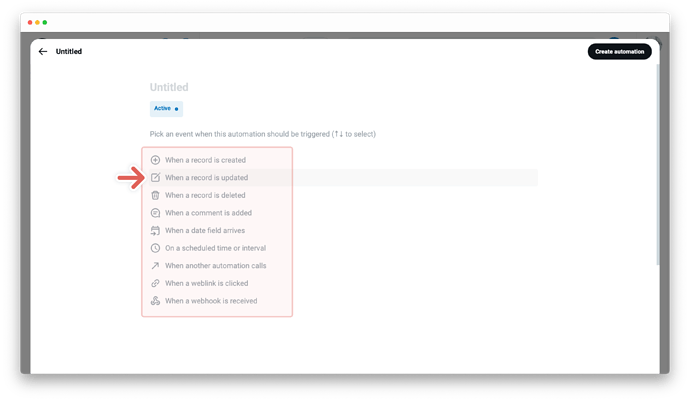![]() Sort collected
Sort collected ![]() is a new action available in Supercharged Workflow Automations.
is a new action available in Supercharged Workflow Automations.
Tape is built to grow with your business. Building first automation is super simple with Tape. Advanced actions like “Search for records” help you manage even complex business processes and are designed for Tape experts. Want to get more out of Tape? Tape partners are certified consultants and are ready to help. Whether you’d like help deciding what to automate or need a hand building, you’ll find the right fit. Just get in touch with us and we connect you with one of our partners.
If you are a developer check out these resources →
Overview
In order to run the “Sort collected” action, one or more previously collected actions are required. A collector action (e.g. sort collected) collects records based on conditions you specify and places the records, imagine in a virtual basket, for later use. A separate virtual basket is created automatically in the background for every app, which can be used for later actions like “Sort collected” within the respective automation.
The “Sort collected” action allows you to sort all previously collected records. You can sort your collected records based on multiple field values appearing in ascending or descending order. This is helpful for example creating a custom table for an invoice that shows the product numbers sorted.
Create automation using the action “Sort collected”
-
First automation block - Trigger - the “When this happens” automation statement
- Choose a trigger, for example
When a record is updated - Set the trigger by selecting the app where the automation should be triggered
- Choose a trigger, for example
-
Second automation block - Filter - the “And if conditions are met” automation statement
- Set your filter to start actions only if certain conditions are met:
- A field to be evaluated, at the first dropdown menu
- An operator at the second dropdown menu, i.e., Contains, Does not contain, Is not, etc.
- A field value - enter the field value for the selected field from the first dropdown. Note that the operators e.g. “is empty” and “is not empty” do not require you to input a field value
- Set your filter to start actions only if certain conditions are met:
-
Third automation block - Action - the “Then do that” automation statement
- First, collect records using a collector action e.g.
Search for records- Click on
+ Add actionand choose between various actions - Set up your action based on the action you’ve selected, like
Search for records - Select the app you want to search through
- Click
+ Add filter- every filter condition has its own row. Add as many as you like - Set your filter to search for records only if certain conditions are met:
- A field to be evaluated, at the first dropdown menu
- An operator at the second dropdown menu, i.e., Contains, Does not contain, Is not, etc.
- A field value - enter the field value for the selected field from the first dropdown. Note that the operators e.g. “is empty” and “is not empty” do not require you to input a field value
- Click on
- Choose and setup an action for all collected records
- Click on
+ Add actionand choose between various actions, for exampleSort collected - Select the collection
- Click
+Add Sortto add a field and define the sort by the field value in ascending or descending order.
- Click on
- First, collect records using a collector action e.g.
-
Click on
Create automationat the top right
Edit and manage actions
The automation editor allows you to edit or manage actions and holds all the important details about your specific automation. To open the editor - click the card with the title of your automation at the gallery of the automation center. From this point, you can choose between various options. Learn more about →
New to workflow automation by Tape? Here’s a summary of what you need to know about automation.
To enable any type of automation, you’ll need to set up a trigger and one or more actions. Some automations also use filters.
- A trigger is an event that starts an automation. The “When this happens” statement. For example, “When a status changes” Learn more about → 1
- Filters are optional and start actions only if certain conditions are met. The “And if conditions are met” statement. For example, "only if the status changes to done" Learn more about →
-
An action is an event the automation performs automatically after it is triggered. The “Then do that” statement. For example, “then send an email to a customer” Learn more about →


